Why trendjacking burns marketers out and what to do instead
Adobe Express surveyed marketers about trend-driven content, and the emotional toll is real
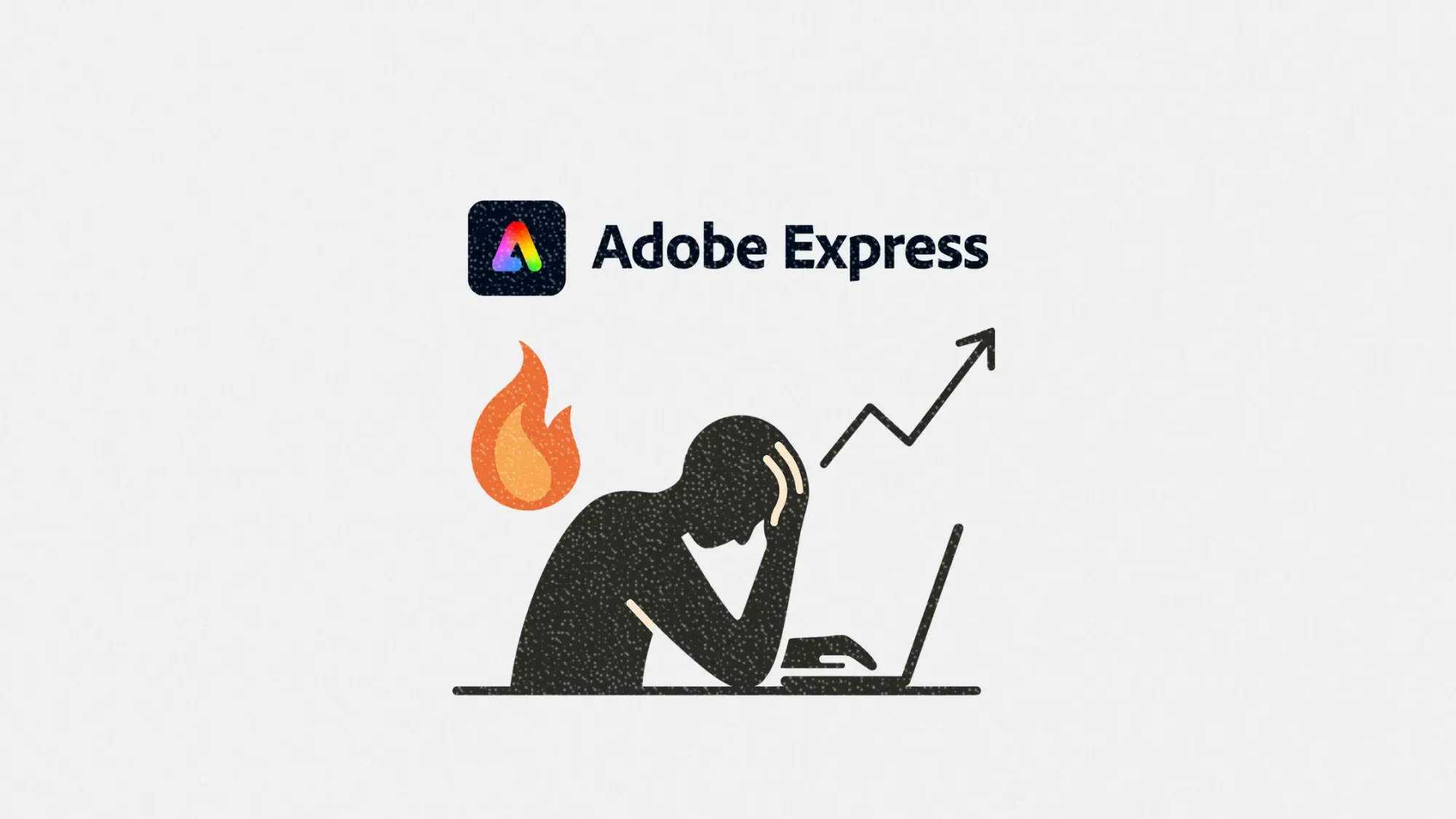
Viral trends may drive clicks, but they’re also driving marketers to the brink. In a new study from Adobe Express, 270 marketers shared what it really feels like to chase engagement in a world where content must be timely, witty, and brand-safe. Often, all at once.
From FOMO-driven posts to burnout and AI-generated shortcuts, the report shows a marketing community reckoning with the emotional and strategic costs of trend-driven content.
This article explores Adobe’s findings and what they mean for marketers looking to play smart, not just fast.
Short on time?
Here’s a table of contents for quick access:
- Feeling the pressure: emotional cost of going viral
- When it works: viral wins and platform bets
- AI’s role in speeding things up
- The trend paradox: smart timing vs bad vibes
- How brands are winning trendjacks without losing the plot
- What marketers should know
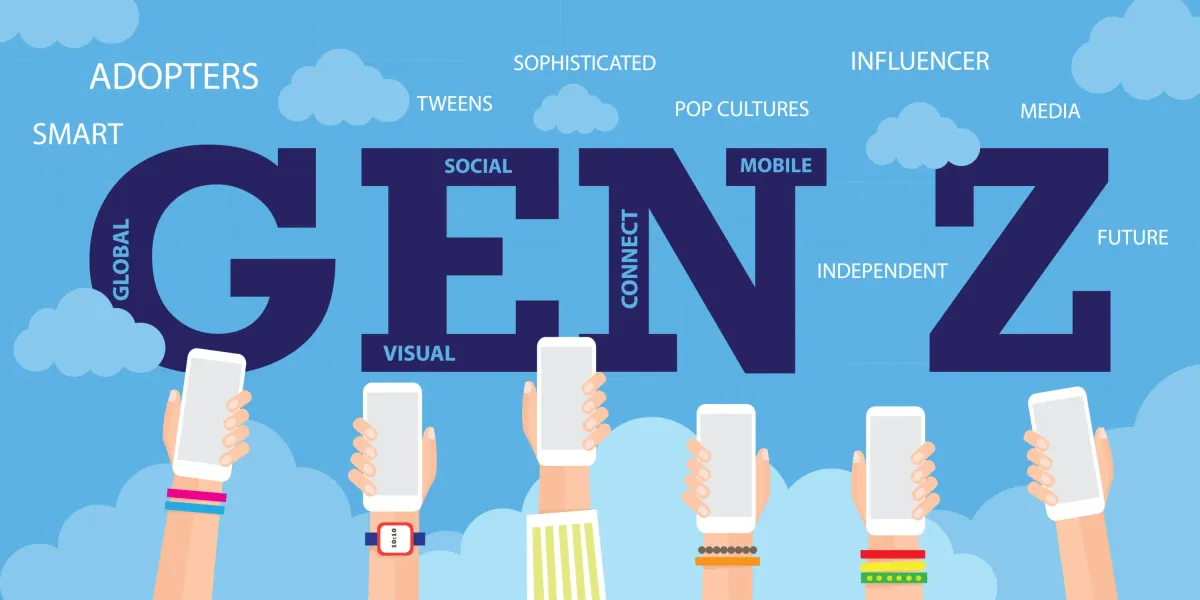
Feeling the pressure: emotional cost of going viral
According to the Adobe Express study, 22% of marketers feel pressured to respond to trending topics daily or several times a week. Gen Z marketers and those in tech or software feel it most acutely, with over half reporting frequent pressure.
Burnout is real. 37% say trend-chasing contributes to emotional fatigue. For Gen Z marketers, that jumps to 47%. While 45% say creating trend-based content excites them, nearly as many report anxiety (40%) or regret after posting something purely out of fear of missing out.
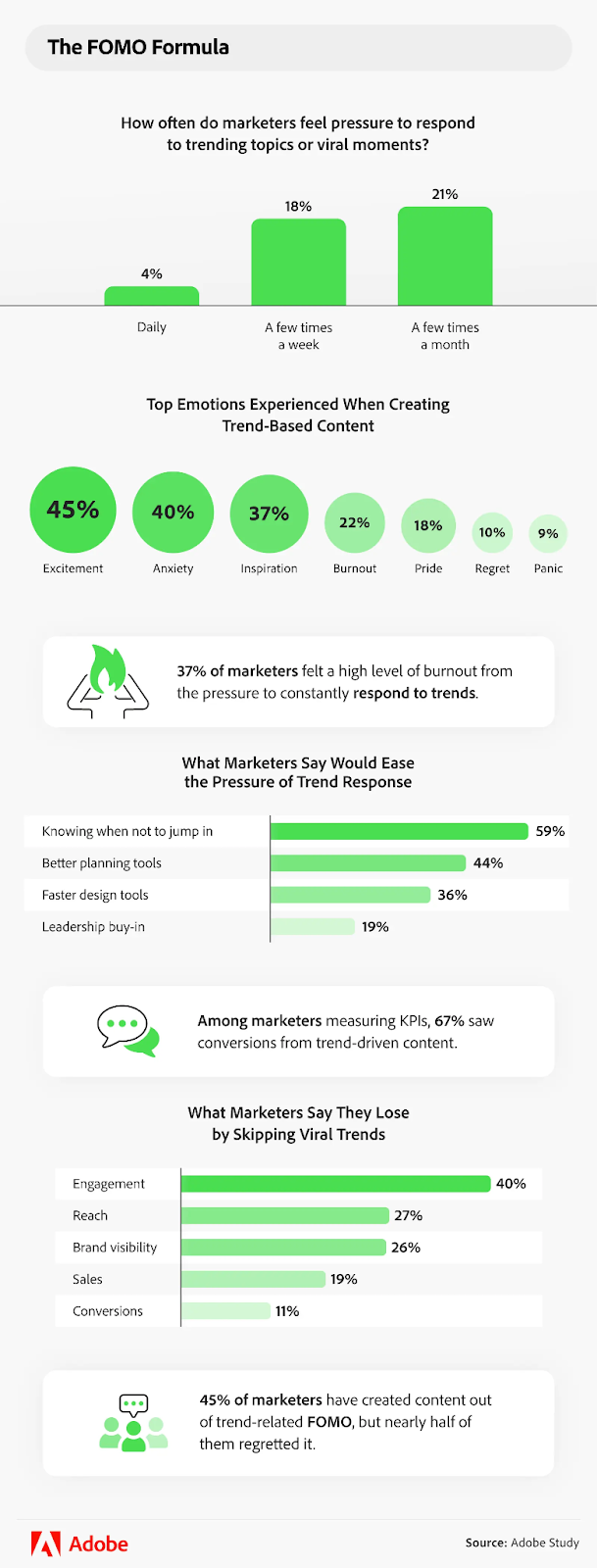
The takeaway? Chasing trends is no longer just a creative challenge. It’s a mental health issue too.
When it works: viral wins and platform bets
Still, when trend-driven content lands, it can deliver. 1 in 4 marketers have gone viral through trend participation. Of those, 79% say they gained new followers, and 67% say they saw measurable conversions.
Retail marketers saw outsized returns, with 32% reporting conversions from trend-based posts. TikTok and Instagram remain the top platforms for trend engagement, with X (formerly Twitter) showing higher chances of virality for those who post there strategically.
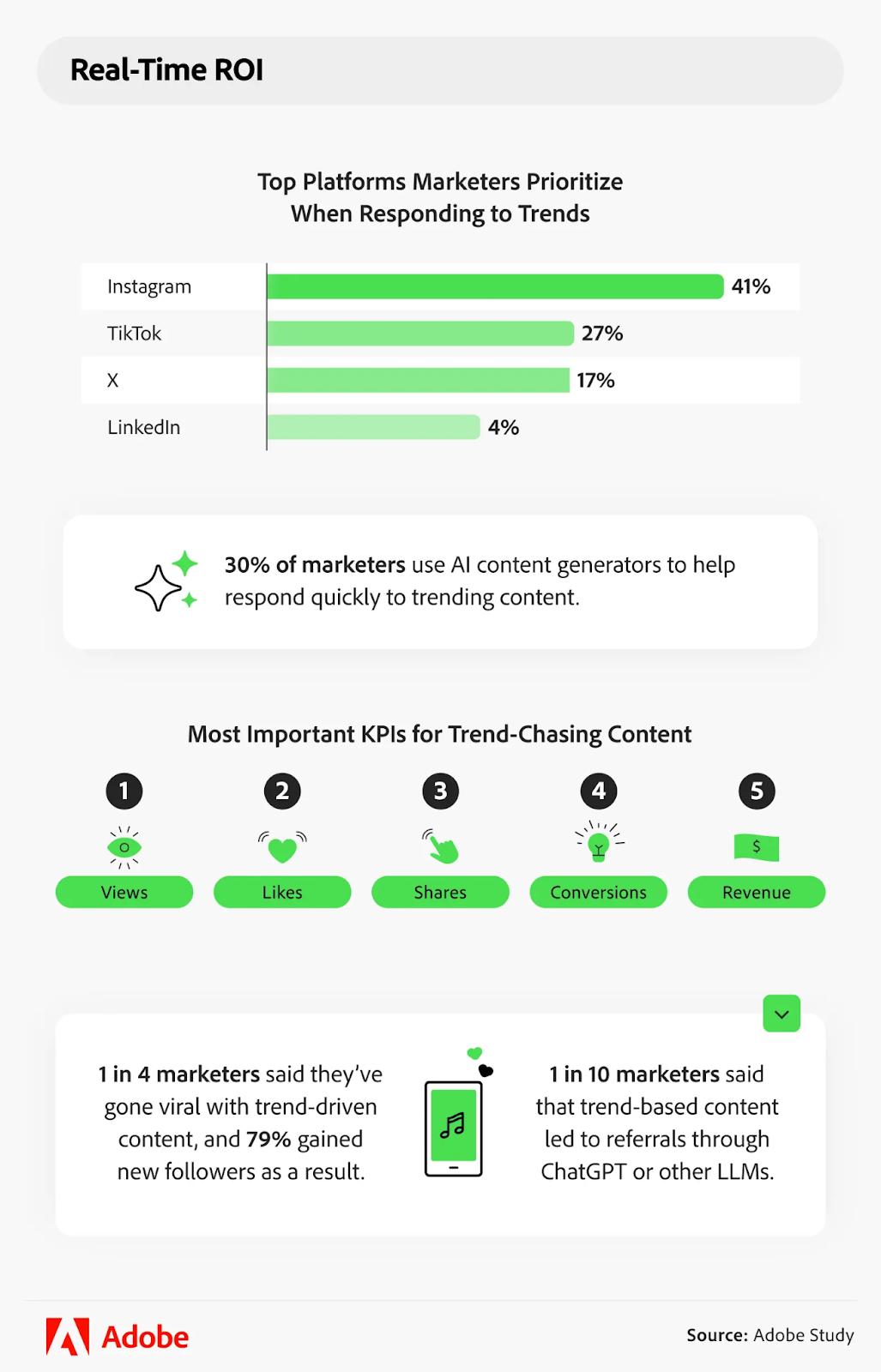
Marketers see views as the top KPI, followed by likes and shares. This signals that while reach matters, so does perceived resonance.
AI's role in speeding things up
To keep up with viral culture’s speed, marketers are increasingly leaning on AI. About 30% use AI content generators to respond faster to trends, and 1 in 10 reported getting referrals via large language models like ChatGPT.
But using AI doesn’t guarantee success.
Poor execution, often due to rushed timing, was the top reason cited for content flops (39%). The challenge isn’t just being fast. It is important to be fast and good.
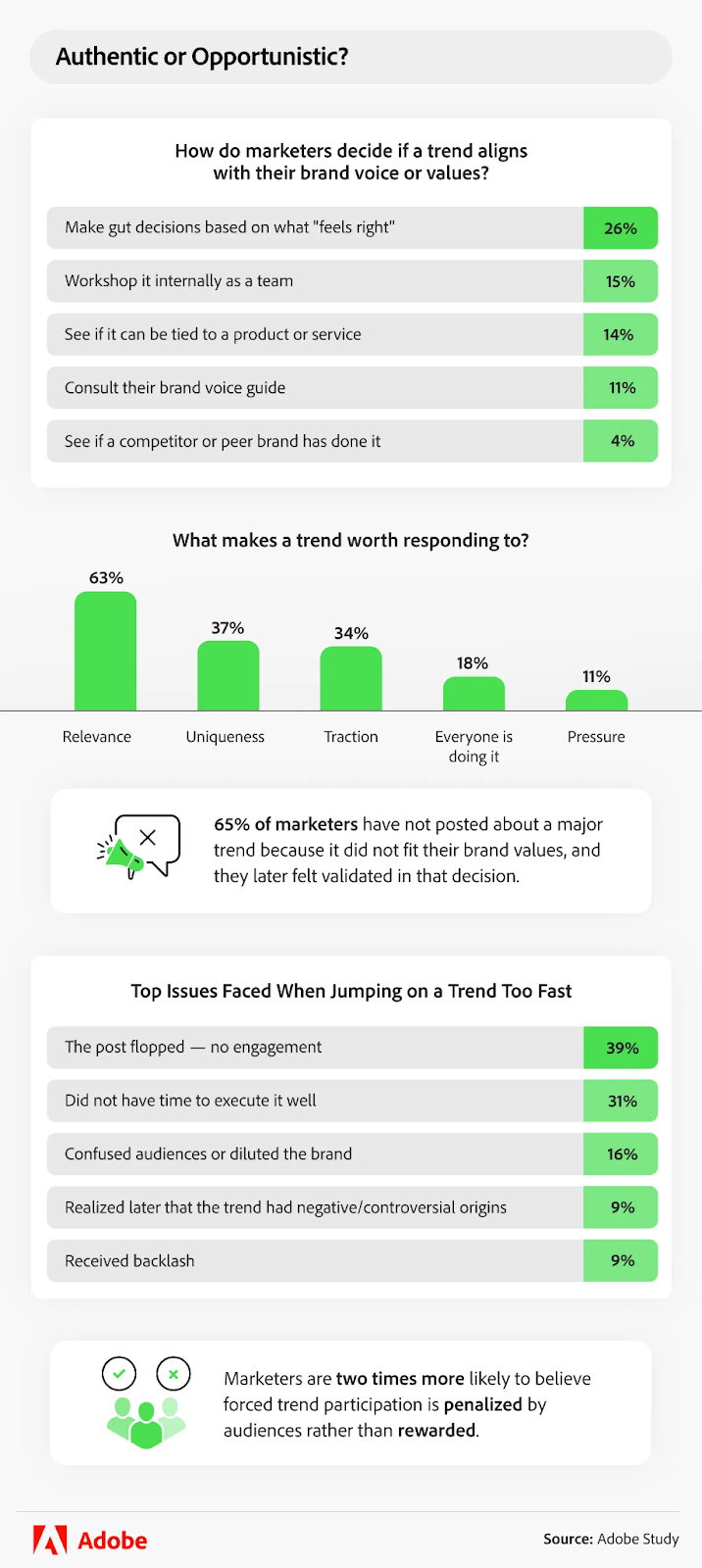
The trend paradox: smart timing vs bad vibes
While trends can pay off, they’re also risky. A majority of marketers, 63%, say brand relevance is their north star when deciding whether to jump on a trend. And it’s working. 65% who skipped major trends said it was the right move.
However, not every risk is obvious at the moment. Nearly half of marketers admitted to posting out of trend-related FOMO and regretted it afterward. Worse still, when content felt off-brand, audiences noticed. Marketers were twice as likely to feel penalized for it than rewarded.
Lesson: your audience can smell desperation.
How brands are winning trendjacks without losing the plot
Despite the emotional toll, some brands are showing how to trendjack without compromising voice or trust. One standout playbook? The Taylor Swift trendjacks.
From album drops to her Travis Kelce engagement, brands like Starbucks, Duolingo, and even insurance companies have piggybacked on Swift’s cultural dominance with relevant, timely, and on-brand posts:
Another clever execution? Fuzozo’s response to the Labubu toy craze, where it launched an AI-generated toy brand inspired by the hype, without spoofing or stealing IP. The result? Maximum engagement with minimal backlash.
More proof that thoughtful trend participation can work when done right.
What marketers should know
Here’s how to chase trends without losing your mind or your brand equity:
1. Set internal rules for brand alignment
Don’t wait for a viral moment to decide whether it’s worth joining. Build a checklist of what qualifies as “on-brand” and stick to it.
2. Use AI to assist, not replace
AI tools can help with ideation and speed, but human review is key. Always filter AI outputs through your brand voice and tone.
3. Benchmark before you post
Review how past trend-based posts performed. If you notice a pattern of low ROI or engagement, it’s okay to skip the hype.
4. Watch where your audience is going
Trends differ by platform. If your audience isn’t on TikTok, a viral meme there may not be worth your energy.
5. Build in opt-out permission
Create a culture where your team knows it's okay to skip trends, even big ones, if they don’t feel right. Long-term trust matters more than short-term reach.
Trend-chasing isn’t going away. If anything, marketers will be expected to respond even faster, with AI in the mix and audiences more reactive than ever.
But chasing every moment comes at a cost. The smart move isn’t to avoid trends entirely, but to build a sustainable, emotionally aware system that protects your team and your brand voice.
When in doubt, remember: not every wave is worth riding.




